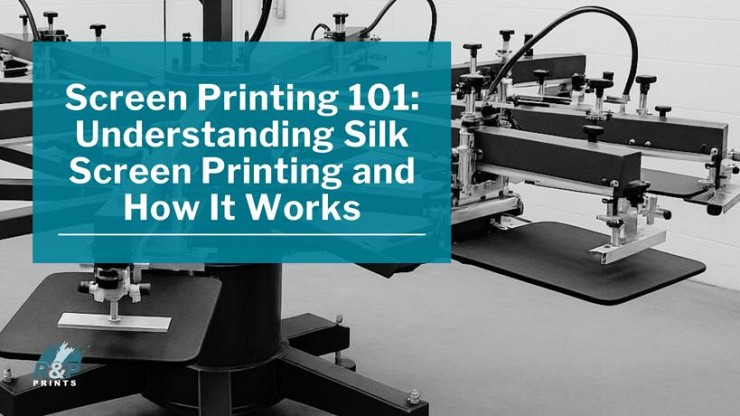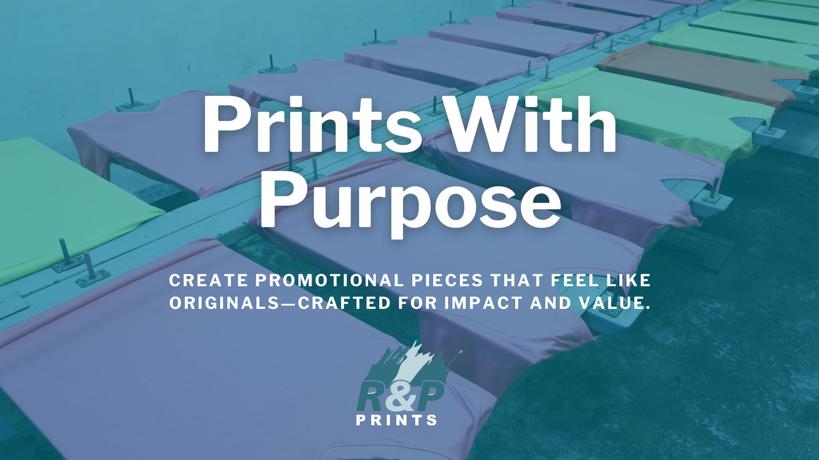Screen Printing 101: Understanding Silk Screen Printing and How It Works
Posted on 29 September 2025

When it comes to creating high-quality, long-lasting designs on apparel, promotional items, and signage, silk screen printing is still the gold standard. It’s a technique that has been around for centuries, yet it remains one of the most durable and versatile printing methods available today.
From bold logos on event merchandise to vivid artwork on t-shirts and tote bags, silk screen printing continues to win over businesses, schools, and organizations that need results that last, without compromising on colour vibrancy or detail.
Whether you’re curious about how the process works, the different applications, or why it’s still preferred over other printing techniques, here’s your complete guide to silk screen printing.
What Is Silk Screen Printing?
Silk screen printing, also known simply as screen printing or serigraphy, is a printing technique that uses a stencil (or “screen”) to transfer layers of ink directly onto a surface. The stencil defines the design, and ink is pushed through the open areas of the mesh screen onto the material beneath.
In the earliest days of the craft, silk mesh was the material of choice, hence the name “silk screen.” Today, polyester mesh is more commonly used because it’s stronger, resists stretching, and delivers a more consistent weave for cleaner, sharper prints. The mesh count (number of threads per inch) can be adjusted to suit different projects, allowing printers to achieve anything from bold, solid areas of colour to extremely fine detail.
One of the biggest strengths of silk screen printing is its versatility. The method works beautifully on textiles such as cotton t-shirts, hoodies, and tote bags, but it can also be applied to materials like wood, metal, glass, and even corrugated signage. This makes it ideal for everything from branded apparel and promotional products in Canada to high-impact event displays and fine art prints.
The process is also known for delivering exceptional colour opacity, sharp lines, and long-lasting results. Because the ink is applied in thicker layers than digital printing, designs tend to hold their vibrancy through repeated wear, washing, and exposure to the elements. For businesses, organizations, and artists who want bold, durable prints that stand out, silk screen printing remains a go-to choice after centuries of evolution.
A Brief History: From Ancient Craft to Modern Branding Powerhouse
- Song Dynasty Origins: The earliest versions of silk screening date back to 960–1279 A.D. in China, where artisans printed intricate designs on fabric.
- Japanese Innovation: Japan refined the technique, using paper stencils and human hair mesh.
- European Expansion: By the 17th century, the process reached Europe, but it wasn’t until silk became widely available in the 19th century that its popularity surged.
- The Commercial Boom: In the early 1900s, the invention of the squeegee revolutionized the method, making it faster and more consistent.
- Pop Art Fame: Artists like Andy Warhol brought silk screen printing into the spotlight in the 1960s.
- Modern Applications: Today, advanced equipment and inks allow for everything from high-volume bulk screen printing to limited-edition art prints.
The Evolution of Modern Silk Screen Printing
In the 1930s, innovators Roy Beck, Charles Peter, and Edward Owens developed photo-reactive stencils using emulsions, transforming silk screen printing into a safer, more efficient process. Advertisers quickly adopted it, and artists began applying the technique to fabric, glass, wood, paper, and metal.
By 1938, artists like Max Arthur Cohn and Anthony Velonis formed the National Serigraph Society, coining the term serigraphy to distinguish fine art prints from commercial work.
The medium rose to pop culture fame in the 1960s with Andy Warhol’s Marilyn Diptych, alongside works by Peter Blake and Robert Rauschenberg. A major commercial leap came when Michael Vasilantone patented a printing machine for apparel, sparking a boom in custom apparel printing, especially t-shirts, that continues today.
Screen Printing Process: From Design to Final Print
The beauty of silk screen printing lies in its precision. Here’s how it works step-by-step:
- Design Creation & Color Separation: Your artwork is prepared digitally. For multi-colour prints, the design is separated into individual colours (color separation).
- Film Output: Each colour layer is printed on a transparent acetate film.
- Screen Preparation: A mesh screen is coated with emulsion and left to dry. The acetate film is placed on the screen, which is then exposed to bright light. The light hardens the emulsion everywhere except the design area.
- Washing Out the Stencil: Water washes away the unexposed emulsion, leaving the open stencil.
- Printing Setup: The screen is placed on a printing board or press, and the item (shirt, bag, sign) is positioned underneath.
- Ink Application: Using a squeegee, ink is pulled across the screen, forcing it through the open mesh areas onto the surface.
- Heat Curing: The printed item is passed through a dryer for heat curing, which locks the ink in for durability.
- Finishing & Quality Check: Each piece is inspected to ensure sharp detail, accurate colour, and no flaws.
Advanced facilities, like R&P Prints Canada, also offer roll-to-roll screen printing for continuous materials, making it ideal for fabric runs or large signage. And for clients who want to combine printing with other branding techniques, R&P Prints also provides professional embroidery services, perfect for adding a premium, textured finish to uniforms, hats, jackets, and more.
Applications and Uses
The versatility of silk screen printing makes it ideal for:
- Custom apparel printing – T-shirts, hoodies, jerseys, and uniforms.
- Event merchandise printing – Concerts, festivals, and fundraisers.Promotional products in Canada – Tote bags, caps, and branded giveaways.
- Signage and displays – Posters, banners, and rigid signs.
- Specialty items – Glassware, wood panels, and more.
Whether you need custom sweaters in Toronto for your staff or branded tote bags for a trade show, silk screen printing delivers bold results that get noticed.
Benefits and Advantages of Silk Screen Printing
- Durability – Inks are thicker and more resistant to fading than many digital printing methods.
- Vibrant Colours – Achieves rich, saturated colours that pop.
- Versatility – Works on fabric, metal, plastic, glass, and wood.
- Cost-Effectiveness for Large Runs – Ideal for bulk screen printing orders.
- Long-Lasting Quality – Designs withstand repeated wear and washing.
Types of Screen Printing Techniques
Different projects call for different methods:
- Spot Colour Screen Printing – Uses solid, vivid colours, perfect for logos and bold graphics.
- Halftone Printing – Creates gradients or shading using tiny dots.
- Grayscale Printing – Uses shades of black and grey for a monochrome look.
- Duotone Printing – Combines two contrasting colours for striking effects.
- CMYK (4-Color) Printing – Full-colour process for photo-like prints.
Simulated Process Printing – Reproduces high-detail images on dark garments using multiple spot colours.

Editions and Authenticity: The Art World’s Connection to Silk Screen Printing
Silk screen printing isn’t just a workhorse for apparel and marketing, it’s also a celebrated medium in fine art. In this context, prints are often referred to as serigraphs, a term that signals an artist-driven, handcrafted process rather than a mass-produced reproduction.
One of the defining features of fine art screen printing is the concept of edition size. When an artist produces a limited edition, only a set number of impressions are made, for example, 50 or 100. Each print is then signed and numbered (e.g., 15/50) to confirm its place in the sequence and to guarantee authenticity. Once the edition sells out, no further prints are produced from that stencil, making the work more collectible.
The tactile quality of the ink in a true serigraph is another marker of value. Unlike flat digital reproductions such as giclees, silk screen prints build layers of ink that can be felt on the surface. This creates a richness and depth that reproductions simply can’t match.
Historically, artists prepared their stencils using materials like amberlith film, a red masking film that could be cut and peeled away to expose the desired design areas. Over time, a stencil wears out from repeated use, further limiting the number of viable impressions and naturally reinforcing the edition’s exclusivity.
In fine art, this process also blurs the line between an original and a reproduction. While each print in a limited edition comes from the same stencil, the artist’s hands-on involvement at every stage makes them multiple originals rather than mere copies. This is why serious collectors value them alongside paintings and sculptures.
For businesses and organizations, understanding these principles can inspire creative branding opportunities. Commissioning a limited-edition series, perhaps a set of commemorative posters, event merchandise printing, or signed prints for a fundraiser, can bring an element of artistry and exclusivity to your promotional strategy. By combining commercial know-how with fine art sensibility, R&P Prints Canada can help create pieces that are both functional and collectible, ensuring your brand leaves a lasting impression in every sense of the word.
Why Choose R&P Prints Canada for Silk Screen Printing?
As a leading silk screen printing company, R&P Prints Canada combines traditional craftsmanship with advanced printing technology to deliver vivid colour, precision detail, and long-lasting results.
Our services go beyond apparel, we also offer embroidery services for a complete branding package. From silk screen printing in Montreal to coast-to-coast delivery, we handle every order with care and expertise.
With in-house design support, competitive pricing, and reliable turnaround times, we’re trusted by Canadian businesses, schools, and organizations for all their printing needs.
Ready to Bring Your Design to Life?
Whether you need event merchandise printing for a festival, promotional products for your company, or durable uniforms for your team, R&P Prints Canada delivers results that last.
Call us at 1-877-646-5111 or visit printscanada.com to get your free quote today.
FAQs on Silk Screen Printing
1. What’s the best ink for silk screen printing?
Plastisol ink is the most widely used, offering durability, opacity, and versatility for different fabrics and designs.
2. Is silk screen printing only for clothing?
No, it’s also ideal for printing on wood, glass, metal, and paper, making it perfect for promotional products, like tote bags, signage, and display boards.
3. How does silk screen printing compare to digital printing?
Screen printing offers superior durability and colour vibrancy, making it the preferred choice for high-use items and bulk orders.
